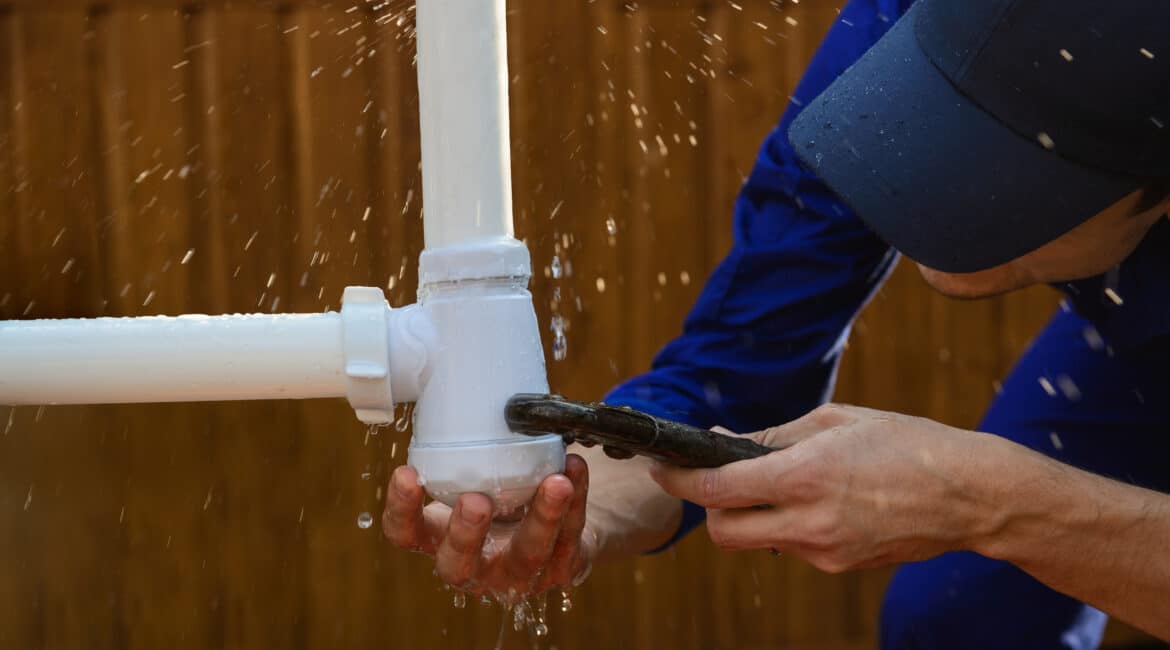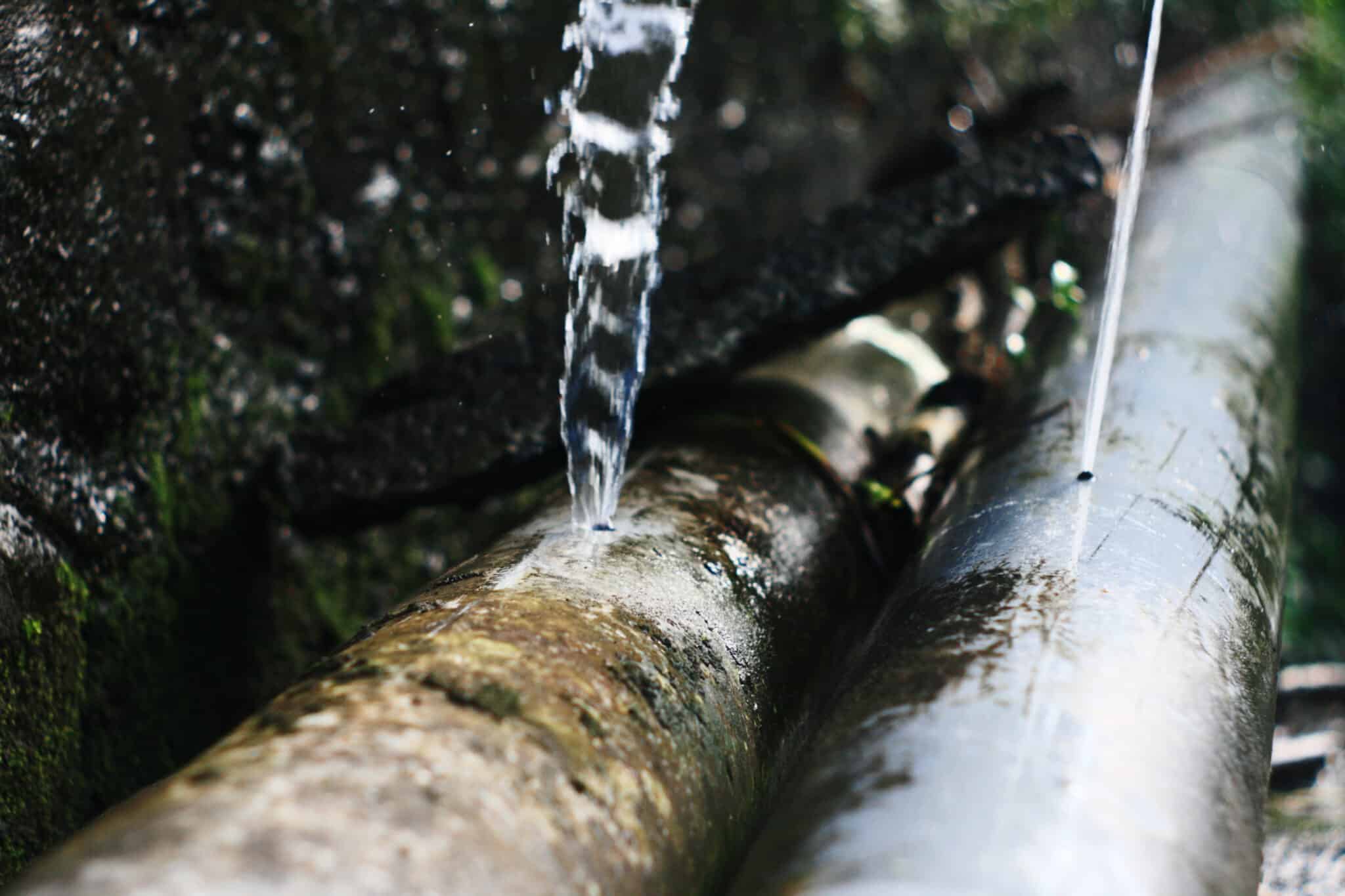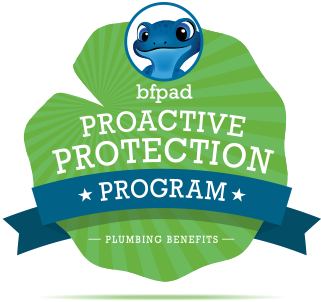
Impact of Soil Erosion on Plumbing Infrastructure
Soil erosion, caused by water, wind, and human activity, silently undermines stability and poses severe risks to buried systems. Plumbing infrastructure, essential for delivering water and removing waste, becomes vulnerable as shifting soil disrupts its alignment and integrity. In Live Oak, TX, weather changes accelerate erosion, threatening pipes, drains, and foundations. These shifts can lead to leaks, bursts, and expensive repairs, making prevention crucial. By addressing soil erosion early, homeowners safeguard plumbing systems, protect property investments, and ensure uninterrupted water flow, highlighting the need for proactive solutions.
Mechanisms of Soil Erosion Affecting Plumbing Infrastructure
Soil erosion is a silent but destructive force that threatens the stability of plumbing infrastructure by undermining the ground that supports it. When erosion removes layers of soil, pipes can shift, sag, or crack under the stress of uneven weight distribution. This displacement not only disrupts the flow of water but also increases the likelihood of leaks, bursts, and system failures, which can quickly escalate into costly repairs for homeowners.
The composition of the soil and its moisture content are key factors in how erosion impacts plumbing infrastructure. Sandy soils, common in certain areas, erode more easily due to their loose structure, leaving pipes unsupported. Meanwhile, clay-rich soils, though denser, can shrink and crack during dry spells, creating voids that allow pipes to settle unevenly. Heavy rains saturate the ground, further destabilizing pipes by softening their foundation, while runoff erodes surrounding areas. These processes are especially prevalent in places like Live Oak, TX, where seasonal weather changes magnify the effects of erosion.
As soil continues to erode, plumbing infrastructure is left vulnerable to misalignment and damage, making it critical for homeowners to address early signs of instability. By understanding these mechanisms, proactive solutions can be implemented to safeguard plumbing systems from long-term damage.

Common Plumbing Issues Resulting from Soil Erosion
Environmental changes that erode soil can create hidden challenges for a property’s plumbing infrastructure. Over time, ground instability caused by erosion removes the support that pipes and underground systems rely on. This often leads to unexpected plumbing failures that disrupt daily life and require costly interventions. In regions like Live Oak, TX, where seasonal weather patterns exacerbate ground shifts, homeowners must understand how erosion directly affects their plumbing systems. Below are two critical problems often tied to this issue.
Cracked Pipes and Water Damage
The displacement of soil places uneven pressure on buried pipes, causing them to bend, crack, or split at connection points. These cracks might start as minor leaks, undetectable at first but wasting water and raising utility costs over time. Without intervention, continued soil movement increases the strain on pipes, often leading to significant ruptures. Burst pipes not only disrupt water service but also create extensive water damage to property. Homes with loose or shifting soils face higher risks, particularly after heavy rainfall or flooding. Addressing these vulnerabilities early can prevent emergencies and minimize long-term damage.
Foundation Movement and Plumbing System Misalignment
Erosion beneath a home’s foundation can lead to uneven settling, a condition that puts undue stress on plumbing infrastructure connected to the structure. Misaligned pipes from shifting foundations can cause recurring leaks, blockages, or reduced water pressure. Over time, these misalignments weaken the entire system, increasing the likelihood of joint failures and pipe separations. Additionally, foundation instability can threaten the structural integrity of the entire property, compounding repair costs. Regular inspections and erosion control efforts are essential to prevent these cascading problems.
Understanding the relationship between soil erosion and plumbing infrastructure helps homeowners take proactive measures, ensuring the longevity of their systems and protecting their investments.
Preventative Measures for Homeowners
Protecting plumbing infrastructure from the effects of soil erosion requires a proactive approach. Homeowners can adopt landscaping strategies and prioritize regular maintenance to mitigate risks. By addressing soil stability and the health of underground systems, these preventative measures can safeguard against expensive repairs and disruptions.
Landscaping Strategies to Stabilize Soil
Thoughtful landscaping is an effective tool for controlling erosion near plumbing lines. Planting vegetation with strong, deep roots—such as native grasses, shrubs, or trees—helps anchor the soil and prevent it from washing away. Adding mulch around plants further reduces surface runoff and protects soil from erosion during heavy rains. In areas with slopes, installing retaining walls or terraced gardens creates physical barriers to stop soil movement. Additionally, directing stormwater flow using well-placed gutters and drainage channels keeps water from pooling near plumbing infrastructure, reducing the risk of ground displacement and pipe damage.
Value of Routine Plumbing Inspections
Regular plumbing inspections are essential for early detection of problems caused by soil erosion. Professional plumbers can identify subtle signs, such as minor pipe misalignments, leaks, or areas where ground movement is placing stress on the system. These inspections are especially critical after extreme weather events that may accelerate erosion. Catching these issues early prevents small vulnerabilities from turning into major failures, such as burst pipes or misaligned systems. Regular maintenance not only extends the lifespan of plumbing infrastructure but also provides homeowners with peace of mind.
By combining smart landscaping techniques with consistent maintenance, homeowners can effectively prevent erosion-related damage. These strategies not only protect plumbing systems but also preserve the structural integrity and value of their property.
Role of Professional Plumbing Services
Addressing plumbing issues caused by soil erosion requires the expertise of skilled professionals who understand the complexities of underground systems. Professional plumbing services provide accurate assessments and implement targeted solutions to protect plumbing infrastructure from the long-term effects of shifting soil. For residents of Live Oak, TX, partnering with experts like bluefrog Plumbing + Drain of San Antonio ensures effective repairs and prevention strategies.
Accurate Assessment and Long-Term Solutions
Professional plumbers use advanced diagnostic tools to identify erosion-related damage that may not be visible on the surface. Through techniques like video pipe inspections, they can detect cracks, leaks, or misaligned plumbing caused by unstable soil. Once the problem is identified, experts create customized solutions, such as reinforcing joints, sealing cracks, or replacing damaged sections of piping. Additionally, they address the root cause of the issue by recommending erosion control measures, such as installing proper drainage systems or stabilizing the ground surrounding plumbing infrastructure. This comprehensive approach not only resolves immediate problems but also ensures long-term system durability.
bluefrog Plumbing + Drain of San Antonio’s Specialized Services
As a trusted name in the plumbing industry, bluefrog Plumbing + Drain of San Antonio offers a range of services designed to address both routine and erosion-related issues. Their team specializes in pipe repairs, leak detection, and preventive maintenance, ensuring that plumbing infrastructure remains resilient against shifting soil. Beyond repairs, they provide guidance on preventative strategies, including landscape adjustments and drainage improvements, helping homeowners protect their property from future erosion impacts. Their dedication to quality ensures that each service delivered is reliable, efficient, and tailored to the unique needs of each property.
Investing in professional plumbing services offers peace of mind by safeguarding your home’s plumbing infrastructure against erosion-related risks, preserving its functionality and value.
Seasonal Considerations: November in Live Oak
November in Live Oak, TX, marks a transitional period where shifting weather patterns can significantly affect soil stability and plumbing infrastructure. Cooler temperatures, combined with sporadic rainfall, create conditions that make the ground more susceptible to movement. For homeowners, understanding these seasonal challenges is key to protecting their property and ensuring plumbing systems remain in optimal condition.
How November Weather Impacts Soil and Plumbing Systems
The onset of cooler temperatures in November triggers soil expansion and contraction, particularly in areas with clay-heavy ground. These fluctuations weaken the stability of the soil around plumbing infrastructure, increasing the risk of pipe misalignment or cracking. Rainfall, while less frequent than in previous months, softens the soil, making it prone to erosion and creating voids around buried pipes. Homes with sandy or loose soil are especially vulnerable, as these soil types erode quickly under wet conditions. This combination of temperature changes and moisture can compromise the integrity of plumbing systems, leading to leaks or even structural failures.
Proactive Steps to Protect Plumbing Systems in November
Preparing your home’s plumbing infrastructure for November’s challenges starts with ensuring proper drainage. Cleaning gutters and redirecting downspouts away from the foundation prevents water from pooling, which could destabilize the surrounding soil. Professional plumbing inspections are another crucial step. Trained experts can detect early signs of stress on pipes, such as minor shifts, small leaks, or weak joints, and recommend repairs or reinforcements. Adding insulation to exposed pipes also helps shield them from the temperature swings, reducing the likelihood of cracks or bursts. For areas prone to erosion, investing in landscaping solutions, such as retaining walls or deep-rooted plants, provides additional stability.
By anticipating November’s weather-related challenges and taking preventative measures, homeowners in Live Oak can safeguard their plumbing infrastructure. Proactive maintenance ensures the durability of these systems, protecting both property value and daily convenience.
Long-Term Solutions to Combat Soil Erosion
Soil erosion can pose serious risks to your property’s stability and plumbing infrastructure if left unaddressed. Implementing long-term solutions to manage erosion is essential for protecting underground systems and maintaining the integrity of your home. By focusing on sustainable practices and professional interventions, homeowners can minimize the impact of soil displacement and ensure a more secure foundation for their plumbing systems.
-
Implementing Effective Drainage Systems
Proper drainage is one of the most reliable ways to control erosion. Installing French drains, channel drains, or rain gardens can redirect excess water away from vulnerable areas, preventing soil from washing away. Additionally, ensuring that gutters and downspouts are clear and positioned to move water away from the home’s foundation reduces moisture buildup and soil instability. Homes located on slopes can benefit from contouring the land or adding swales, which slow down water flow and prevent runoff from eroding critical areas.
-
Reinforcing Soil Stability
Stabilizing the soil around plumbing infrastructure ensures that pipes and underground systems remain secure over time. Planting vegetation with deep root systems, such as native grasses or shrubs, anchors the soil and reduces erosion. For areas with significant erosion risks, applying geotextiles or soil-retaining mats provides extra protection, particularly on slopes or near foundations. In extreme cases, professional-grade soil stabilizers or erosion-control blankets can be applied to fortify the ground and create a more resilient base for plumbing systems.
-
Installing Retaining Walls and Terraces
For properties with uneven terrain, retaining walls or terraced landscaping offer long-term solutions to manage soil movement. Retaining walls provide a physical barrier that holds soil in place, especially in erosion-prone areas. Terracing not only prevents soil from washing downhill but also creates flat areas that improve drainage and reduce runoff. These solutions not only combat erosion but also enhance the overall landscape aesthetics and property value.
-
Professional Soil and Plumbing Evaluations
Regular assessments by experts are vital to understanding and mitigating erosion risks. Professional plumbers can evaluate the condition of underground systems, identify areas of concern, and recommend tailored solutions. Geotechnical engineers can analyze soil composition and suggest advanced stabilization techniques, such as adding aggregate materials or implementing subsurface drainage solutions. Combining these insights ensures that erosion control efforts are both effective and sustainable.
Taking a proactive approach to soil erosion safeguards your property from long-term damage. These solutions not only protect plumbing infrastructure but also enhance the stability and value of your home.
Case Studies: Soil Erosion Impact in Live Oak, TX
Soil erosion in Live Oak, TX, presents a hidden but persistent threat to plumbing infrastructure. The unique combination of soil types and weather fluctuations in the area creates ideal conditions for ground instability. Local instances of erosion-related plumbing failures reveal the importance of proactive measures to prevent costly damage.
-
Real-Life Plumbing Issues Linked to Erosion
A homeowner in Live Oak experienced severe water damage after heavy rainfall caused soil to erode beneath their main water line. The lack of support resulted in a misaligned pipe that eventually cracked, leading to significant leaks. Another property, located on sloped terrain, suffered from soil displacement due to poor drainage. The shifting ground created voids that put immense pressure on the plumbing infrastructure, causing multiple pipe joints to fail. Both situations highlight the challenges homeowners face in managing erosion and the potential costs of ignoring these risks.
-
Impact of Local Soil Composition
The soil in Live Oak is a mix of sandy loam and clay, each contributing to erosion in different ways. Sandy soil, with its loose structure, is easily washed away during storms, leaving pipes exposed and vulnerable to damage. Conversely, clay-heavy soils expand when wet and contract during dry periods, causing stress on underground systems. These constant shifts compromise the integrity of plumbing infrastructure over time, increasing the likelihood of leaks, misalignments, and even ruptures. This dynamic environment underscores the need for erosion-resistant strategies to protect homes in the area.
Proactively addressing these risks through regular inspections, enhanced drainage systems, and soil stabilization techniques can help homeowners in Live Oak safeguard their plumbing systems and avoid significant expenses.
Environmental and Economic Impacts
The shifting of soil from erosion causes lasting damage to community infrastructure and significantly increases costs for homeowners and municipalities. Its effects ripple through ecosystems, water systems, and public resources, demanding immediate action.
Erosion destabilizes roads, bridges, and drainage systems by eroding the ground they rely on for support. This instability increases the frequency and cost of repairs, straining municipal budgets. Displaced soil clogs waterways, diminishing their capacity to handle stormwater and increasing flooding risks. In regions like Live Oak, TX, sedimentation also disrupts aquatic habitats and reduces water quality, leading to higher treatment costs for municipalities and environmental degradation.
Homeowners face substantial financial consequences as erosion undermines plumbing infrastructure. Shifting ground causes pipes to misalign, crack, or leak, requiring expensive repairs or replacements. Additionally, erosion around a home’s foundation can result in structural damage, further increasing costs and reducing property values. The compounding effect of these issues creates significant challenges for property owners and local governments alike.
Proactive solutions such as stabilizing soil with vegetation, enhancing drainage systems, and scheduling regular plumbing inspections are critical to reducing these impacts. By investing in these measures, communities can protect infrastructure, preserve natural resources, and reduce financial strain for both homeowners and municipalities.

FAQ
-
What are the early signs of erosion affecting plumbing infrastructure?
Early signs include slow drainage, reduced water pressure, and unexplained increases in water bills. Visible cracks or depressions near plumbing lines often indicate shifting soil. You might also notice unusual pipe noises, such as gurgling, as the soil movement disrupts the alignment of plumbing infrastructure.
-
How often should plumbing systems be inspected for erosion damage?
Annual inspections are recommended to maintain plumbing infrastructure. However, in areas prone to erosion, additional inspections should follow heavy rainfall or visible soil movement. Regular evaluations help identify misaligned pipes, leaks, and other erosion-related issues before they escalate into costly problems.
-
Can soil erosion be completely prevented?
While erosion can’t be entirely stopped, its effects can be significantly reduced. Implementing proper drainage systems, planting vegetation with strong root structures, and applying soil-stabilizing techniques help control erosion and protect plumbing infrastructure. Ongoing maintenance and professional monitoring are also crucial.
-
What landscaping practices help reduce soil erosion?
Planting ground covers, shrubs, and trees with deep root systems anchors soil, preventing it from washing away. Mulching retains moisture and reduces surface runoff. Retaining walls or terraced gardens on slopes help minimize erosion while enhancing the landscape and safeguarding plumbing systems.
-
How does soil erosion affect water quality?
Erosion increases sedimentation in waterways, reducing clarity and harming aquatic habitats. Displaced soil carries pollutants like fertilizers and chemicals into water systems, degrading quality and increasing treatment costs for municipalities and homeowners.
Choose bluefrog Plumbing + Drain of San Antonio to protect your plumbing infrastructure. Contact us today for reliable, expert solutions!











